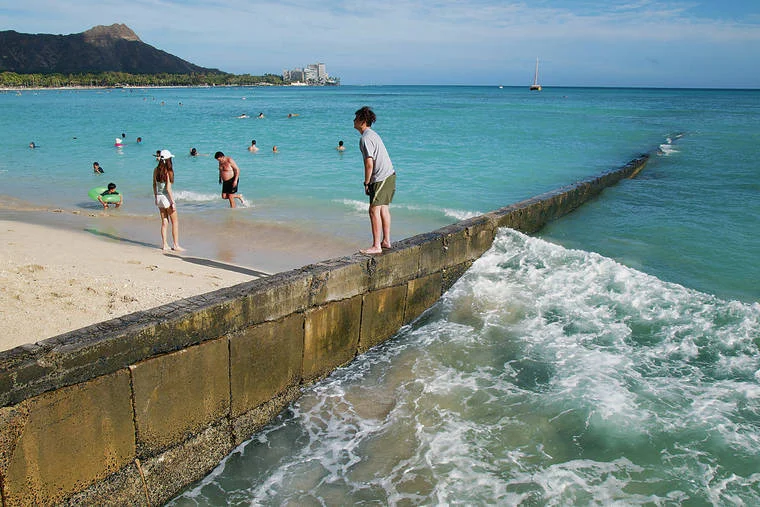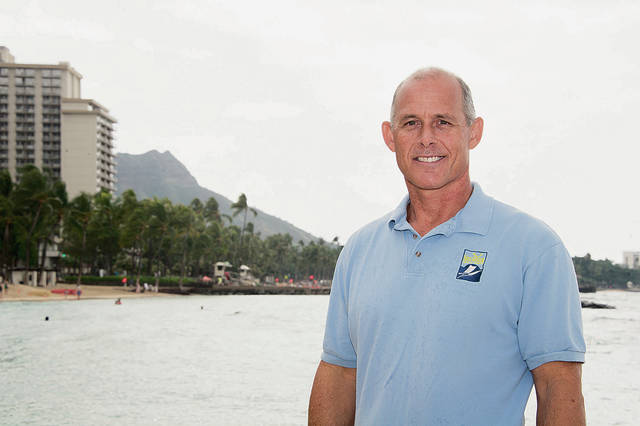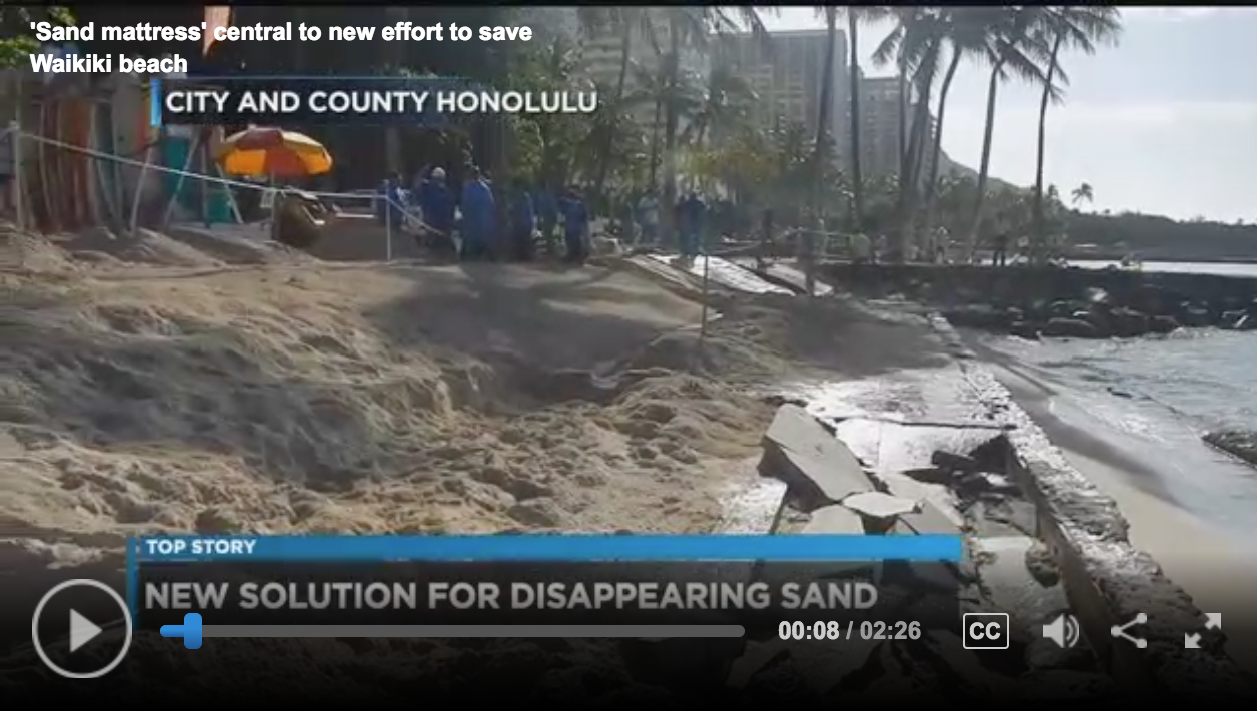$2.5 Million for the replacement fo the Royal Hawaiian Groin was included as part of the State appropriation this year.
The economic impact to Hawaii of Waikiki Beach was recently estimated at $2.2 billion a year, but the crumbling Royal Hawaiian groin and other man-made structures are all that is keeping the state’s most visited beach from being swept away.
The concrete groin was erected around 1927 to protect structures along the coastline and to create the sandy beach that has made Waikiki so famous. It’s been failing for years with no immediate timeline for replacement until now.
The state budget passed by the Legislature this year includes some $13 million in Waikiki Beach funding, enough to shore up the Royal Hawaiian groin, located between the between the Waikiki Sheraton and Royal Hawaiian hotels, and return a groin to Kuhio Beach where erosion periodically exposes old foundation from the Waikiki Tavern, which was built in 1928 and demolished in 1962.
It’s also enough to fund a $10 million Waikiki Beach Master Plan that would include another four or so projects.
“This is the largest appropriation for beach improvements on Oahu in recent memory. It allows us to move forward on several projects that have been discussed on and off for decades,” said Dolan Eversole, Waikiki Beach management coordinator for the University of Hawaii Sea Grant College Program.
“That’s a good thing since people are starting to see the reality of sea level rise on Waikiki Beach,” said Eversole, who is coordinating a private partnership between the state Department of Land and Natural Resources and the Waikiki Beach Special Improvement District Association. “There used to be a wait-and-see sentiment among some, especially the Waikiki beach boys, but there has been a shift in overall perception and people seem to feel that we can’t wait any longer to address these challenges.”
Much is at stake since Waikiki Beach is the epicenter of Oahu’s visitor industry. Last year, the island welcomed more than 5.9 million tourists, or about 60% of the state’s total count of nearly 10 million visitors. They accounted for more than $8 billion in visitor spending, or about 46% of the statewide tally of $17.8 billion…..









